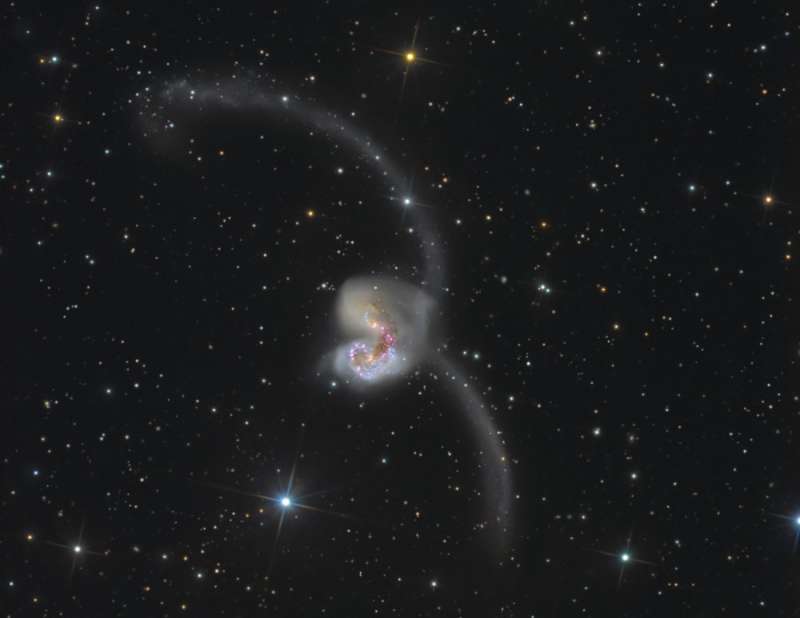
|
Credit & Copyright: Acquisition and data reduction -
Andrey Oreshko (Elena Remote Observatory),
Processing - Dietmar Hager (stargazer-observatory)
Explanation:
Some 60 million light-years away in the southerly
constellation
Corvus, two large galaxies
collided.
But the stars in the two galaxies, cataloged as
NGC 4038
and NGC 4039, don't collide in the course of the
ponderous event,
lasting hundreds of millions of years.
Instead, their large clouds of
molecular
gas and dust do, triggering furious
episodes of star formation near the center of the
cosmic wreckage.
Spanning about 500 thousand light-years,
this
stunning view also reveals new star clusters and
matter flung far from the scene
of the accident by
gravitational
tidal forces.
Of course,
the suggestive visual appearance of the extended arcing structures
gives the galaxy pair its popular name - The Antennae.
Processing - Dietmar Hager (stargazer-observatory)
|
January February March April May June July August September October November December |
| ||||||||||||||||||||||||||||||||||||||||||||||||
NASA Web Site Statements, Warnings, and Disclaimers
NASA Official: Jay Norris. Specific rights apply.
A service of: LHEA at NASA / GSFC
& Michigan Tech. U.
Based on Astronomy Picture
Of the Day
Publications with keywords: NGC 4038 - NGC 4039 - galactic collision - interacting galaxies
Publications with words: NGC 4038 - NGC 4039 - galactic collision - interacting galaxies
See also:
- APOD: 2025 August 19 Á Giant Galaxies in Pavo
- APOD: 2025 June 1 Á UGC 1810: Wildly Interacting Galaxy from Hubble
- APOD: 2025 March 12 Á NGC 772: The Fiddlehead Galaxy
- Peculiar Galaxies of Arp 273
- APOD: 2025 January 6 Á Colliding Spiral Galaxies from Webb and Hubble
- Shell Galaxies in Pisces
- APOD: 2024 July 15 Á The Tadpole Galaxy from Hubble
